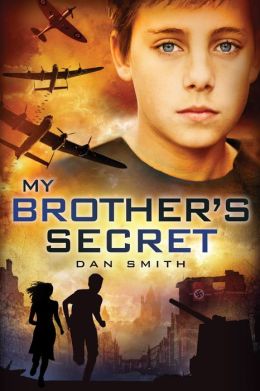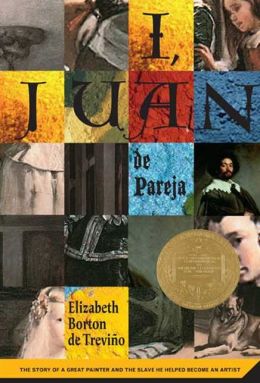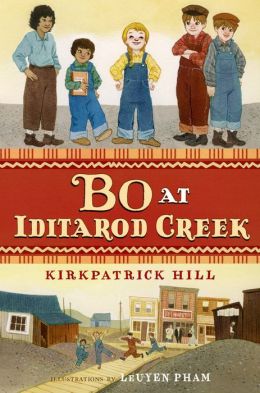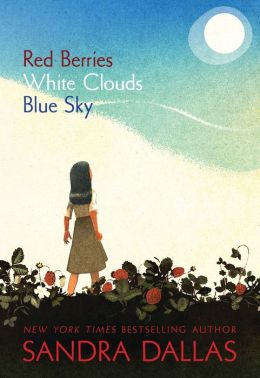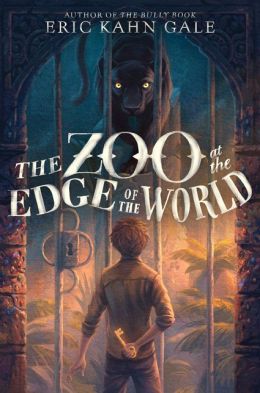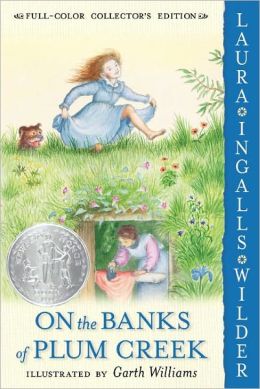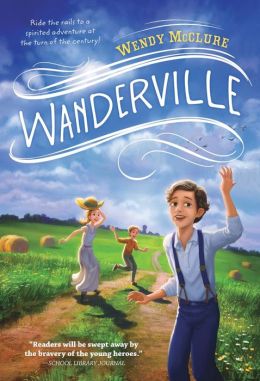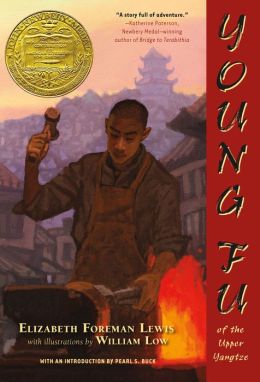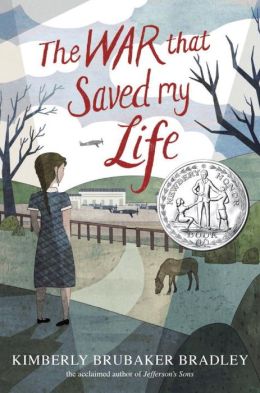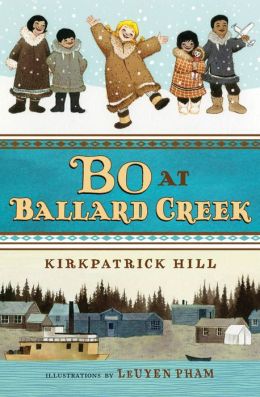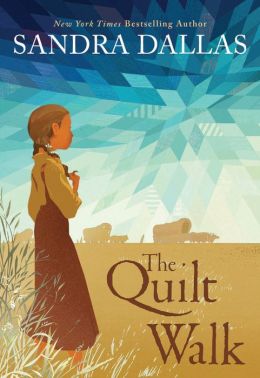new posts in all blogs
Viewing: Blog Posts Tagged with: j historical, Most Recent at Top [Help]
Results 26 - 50 of 74
How to use this Page
You are viewing the most recent posts tagged with the words: j historical in the JacketFlap blog reader. What is a tag? Think of a tag as a keyword or category label. Tags can both help you find posts on JacketFlap.com as well as provide an easy way for you to "remember" and classify posts for later recall. Try adding a tag yourself by clicking "Add a tag" below a post's header. Scroll down through the list of Recent Posts in the left column and click on a post title that sounds interesting. You can view all posts from a specific blog by clicking the Blog name in the right column, or you can click a 'More Posts from this Blog' link in any individual post.

By:
Becky Laney,
on 10/15/2015
Blog:
Becky's Book Reviews
(
Login to Add to MyJacketFlap)
JacketFlap tags:
family,
J Fiction,
Candlewick,
2014,
MG Fiction,
review copy,
mg historical,
j historical,
books reviewed in 2015,
Add a tag
Ship of Dolls. Shirley Parenteau. 2014. Candlewick. 272 pages. [Source: Review copy]
Did I enjoy reading Shirley Parenteau's Ship of Dolls? Yes! I adore historical fiction, and this one was a satisfying read.
Lexie Lewis is living with her grandparents (paternal grandparents) in Portland, Oregon. She wishes she was still living with her mother, but, her mother has remarried; that in addition to their big dreams of show business makes it inconvenient to have Lexie with them. The novel is set circa 1926 and 1927.
Lexie's school is participating in the Friendship Doll Exchange with Japan. Lexie is very involved in this. She longs to be able to touch the doll, hold the doll. But, of course, this isn't allowed. The teacher can't let her students play with the doll that is to be sent to Japan later that year. When Lexie breaks a rule, she is "punished" by her teacher. (Does the teacher really view this as punishment, or is she sympathetic to young Lexie?) Her punishment is that she has to sew an outfit for the doll to pack in her trunk. True Lexie can't sew and she's never made a pattern before, but, Lexie will get to be more involved with the doll than her classmates. For anyone who sews knows that you have to take measurements and try on the garment(s) throughout the process.
In addition to being about the doll exchange, the novel is very much a coming-of-age story focused on family, friendship, longing and belonging.
Lexie learns early on in the novel that whoever writes the best letter (for the assignment) gets to travel with the doll to San Francisco. She MUST win. Not because she's obsessed with the doll. But because her mother now lives there and if she wins she could spend some time with her...
I enjoyed spending time with Lexie. But I also enjoyed spending time with her grandparents. I really did. This one was definitely a character-driven novel. It is relatively slow-paced.
© 2015 Becky Laney of
Becky's Book Reviews
Case of the Phantom Cat (Maisie HItchins #3) Holly Webb. Illustrated by Marion Lindsay. 2015. Houghton Mifflin Harcourt. 176 pages. [Source: Review copy]
I enjoyed this one, I did. But I didn't enjoy it as much as the first two books in the Maisie Hitchin's mystery series. In the third mystery, Maisie meets a new friend, Alice. Alice takes French lessons from someone who boards with Maisie's grandmother. Alice has been sick and missed a few lessons, Maisie, curious as ever, goes to visit her. This will be their first time to actually talk freely and for any length of time. Some in Alice's household take a liking to Maisie, others not so much. Her father invites Maisie, whom he has just met, and whom his daughter has just met, to accompany his daughter to the country. The two girls will be accompanied by the governess. Things could go smoothly, or, not so smoothly for everyone...but with a title like CASE OF THE PHANTOM CAT...one can guess that trouble and danger are on the way...
Alice and Maisie do indeed find an adventure at the rented country house. But it isn't necessarily a dangerous one. Maisie will solve the mystery of the spooky sounds, the white "phantom" cat, and the HORRIBLE smell in the library...
If you're already hooked to the series, this one is worth your time. If you haven't met Maisie yet, this isn't the best introduction.
© 2015 Becky Laney of
Becky's Book Reviews

By:
Becky Laney,
on 8/12/2015
Blog:
Becky's Book Reviews
(
Login to Add to MyJacketFlap)
JacketFlap tags:
YA Fiction,
Random House,
J Fiction,
World War II,
YA Sports,
J Sports,
2010,
MG Fiction,
review copy,
YA Historical,
mg historical,
j historical,
books reviewed in 2015,
Add a tag
Missing in Action. Dean Hughes. 2010/2015. Random House. 240 pages. [Source: Review copy]
I definitely enjoyed reading Dean Hughes' Missing in Action. I think anyone who enjoys stories set during World War II or anyone who enjoys baseball stories will be able to appreciate this coming-of-age story.
Jay Thacker has recently moved from Salt Lake City to Delta, Utah. Jay and his mom are staying with his grandparents--his maternal grandparents. It is a bit of an adjustment for him--not that his life was perfect before--but starting over isn't always easy no matter one's past. Jay's father--who was half-Navajo--is a soldier currently listed as "missing in action." Jay is confused by this. Is his dad alive or dead? Is he a prisoner of war? Should he feel guilty if he starts moving on in his life? of thinking of his father as dead? how long should he cling to hope that he's alive? He doesn't want his dad to be dead, but, he's been missing-in-action for two or three years--a LONG time not to have heard. Still. There's always a chance that he is still alive...and Jay isn't one to rule that out. (Is his mom?)
So. Jay is new in town, and, he starts playing baseball with the other kids--the other boys. He loves playing with the others, he does, but, he doesn't like that he's called "Chief" because he's Indian. He feels that there is some stigma attached to being Indian, and, he doesn't want to 'be' anything...other than himself. Are these friendships real?
Complicating things in a wonderful way, Jay begins working with Ken, a Japanese-American teen, one of many being held at an Internment Camp in the desert. If his Dad happens to be alive, chances are, he is in a Japanese prisoner of war camp. Wouldn't be friendly with Ken be a betrayal to his Dad? Then again, Ken isn't like Jay thought he "ought" to be. Ken is great at baseball, great at dancing, and so very American. Ken is easily one of the best characters in the novel. It's hard not to love him. Jay learns a lot about friendship from his time working side-by-side with Ken on his grandfather's farm.
Missing in Action is a great coming-of-age story focusing on identity and friendship. It's easy to recommend this one.
© 2015 Becky Laney of
Becky's Book Reviews

By:
Becky Laney,
on 7/12/2015
Blog:
Becky's Book Reviews
(
Login to Add to MyJacketFlap)
JacketFlap tags:
family,
Newbery,
J Historical Fiction,
brothers and/or sisters,
J Fiction,
J Realistic Fiction,
children's classic,
library book,
1985,
j historical,
books reviewed in 2015,
books reread in 2015,
Add a tag
Sarah, Plain and Tall. Patricia MacLachlan. 1985. Houghton Mifflin. 64 pages. [Source: Library]
I've read Sarah, Plain and Tall several times, but, I can't find proof that I've blogged about it. So. Sarah, Plain and Tall won the Newbery in 1986. It is historical fiction for the youngest of readers.
Anna is the heroine of Sarah, Plain and Tall. Through her we meet Caleb, her brother; her father; and Sarah, the woman who may become her step-mother if all goes well. The children want this very much, a new mother.
Sarah comes to visit the family for one month. Will she come to love them? Will they come to love her? Will they belong together? Is this meant to be? Or will Sarah miss her old home and her old life too much to stay?
This is a sweet novel full of innocent longing. I loved all of the characters. There is something so simple and pure about it. Definitely recommended.
© 2015 Becky Laney of
Becky's Book Reviews

By:
Becky Laney,
on 7/1/2015
Blog:
Becky's Book Reviews
(
Login to Add to MyJacketFlap)
JacketFlap tags:
war,
J Fiction,
World War II,
Scholastic,
MG Fiction,
review copy,
mg historical,
j historical,
2015,
books reviewed in 2015,
Add a tag
My Brother's Secret. Dan Smith. 2015. Scholastic. 304 pages. [Source: Review copy]
Karl Friedmann loves to play war games, and can't wait to join the Hitler Youth. But after his father's death, he begins to question the rightness of the war, and the rightness of the Nazi party. This change of heart isn't immediate, it's more of a journey as he observes what the war has done to his family, to his friends, to his neighborhood. Two people definitely make an impact on him: his older brother, who does have a secret, and his new best friend, a girl around his own age.
My Brother's Secret is an intense read with plenty of action and drama.
I definitely found it a compelling read--a quick one too! It was action-packed until the very end. I was almost sure there was no way they could resolve it with so few pages left, and, in a way, it did feel rushed. But still. Quite a read.
© 2015 Becky Laney of
Becky's Book Reviews

By:
Becky Laney,
on 6/18/2015
Blog:
Becky's Book Reviews
(
Login to Add to MyJacketFlap)
JacketFlap tags:
family,
J Fiction,
Simon and Schuster,
MG Fiction,
library book,
mg historical,
j historical,
2015,
2015 Cybils-eligible,
books reviewed in 2015,
Add a tag
Stella by Starlight. Sharon M. Draper. 2015. Simon & Schuster. 336 pages. [Source: Library]
Nine robed figures dressed all in white. Heads covered with softly pointed hoods. Against the black of night, a single wooden cross blazed. Reflections of peppery-red flames shimmered across the otherwise dark surface of Kilkenny Pond. Stella by Starlight is set in Bumblebee, North Carolina, in the fall of 1932. What can I say about this one? I could say many things, but, I'll start with this: I LOVED, LOVED, LOVED IT.
I loved the narration. I loved the heroine, Stella, she makes a remarkable narrator. I loved her voice and her spirit. I loved the characterization--it was rich. I loved meeting Stella and her brother, Jojo. I loved her parents. I loved getting to know her neighbors. I loved that we get a real sense of community and place. It was the kind of novel that is completely absorbing--compelling. I loved the drama and the intensity. Stella by Starlight is what happens in one community after three African-American men decide to register to vote. The book captures why the men chose to act, what voting meant to them, what it represented. The book captures what it meant to their families and the community as well. Stella knows, for example, that it is a courageous act for her father, and, a necessary one as well. She's proud of her father for doing what he feels is right--knows is right. But Stella also knows a healthy-fear of the KKK. The book captures that uncertainty, that fear, it brings the community together as one. I also loved the religious/spiritual aspects of this one: how central the church is, how central the Christian faith is in the community. It celebrates faith, and shows it to be a powerful force. Stella by Starlight is beautifully written. I highly recommend it!
© 2015 Becky Laney of
Becky's Book Reviews

By:
Becky Laney,
on 5/20/2015
Blog:
Becky's Book Reviews
(
Login to Add to MyJacketFlap)
JacketFlap tags:
war,
Historical Fiction,
J Fiction,
World War II,
children's classic,
MG Fiction,
book I bought,
1942,
mg historical,
j historical,
books reviewed in 2015,
Add a tag
Snow Treasure. Marie McSwigan. Illustrated by Mary Reardon. 1942. 208 pages. [Source: Bought]
Set in Norway in 1940, Snow Treasure is a true must-read for anyone who loves a good adventure story or a good war story. Snow Treasure is based on a true story too! It is about the smuggling of Norway's gold, smuggling it out of the country so that it doesn't fall into Nazi hands. How is it smuggled out? Who could hope to smuggle it out undetected without any Nazi being the wiser? Why, you let children do it, naturally.
The hero of Snow Treasure is a young boy named Peter Lundstrom. He isn't the only child from his Norwegian village involved. He has a lot of help from other boys and girls. The older and stronger can carry more gold on their sled. The younger take less. But all work together to help their country in need. They are one part of the process, adults also play a big role, of course. For it will be Peter's uncle who will smuggle the gold out of the country on his ship.
I loved everything about this one. I loved the characters. I loved Peter and his family. I loved the adventure aspect of it. It's a thrilling read. It isn't a simple, easy process. It's hard work. And each trip is a risk, of course. For they do see and hear a lot of Nazis as they are carrying on their most secret work.
Snow Treasure is a compelling read for children and adults.
© 2015 Becky Laney of
Becky's Book Reviews

By:
Becky Laney,
on 5/14/2015
Blog:
Becky's Book Reviews
(
Login to Add to MyJacketFlap)
JacketFlap tags:
mg historical,
j historical,
books reviewed in 2015,
J Fiction,
Newbery Honor,
children's classic,
MG Fiction,
1964,
book I bought,
Add a tag
Across Five Aprils. Irene Hunt. 1964. 224 pages. [Source: Bought]
Did I love, love, love Irene Hunt's Across Five Aprils? Probably not. Did I love it a lot more than I thought I would? Yes, definitely. Across Five Aprils is a Newbery Honor Book. This May I'll be focusing on Newbery honor books and winners published in the 1960s. I probably wouldn't have picked this one up if I hadn't been doing a Newbery challenge or two this year. I'm very glad I read this one.
Across Five Aprils is historical fiction. Jethro Creighton is the hero of the novel. It opens in April 1861 and concludes in April 1865, I believe. Readers see the Civil War through his eyes. He is not a soldier, he's just a boy. His older brothers, however, do go to war. (This one is set in Illinois). Most of his brothers fight for the Union, but, one of his brothers, his favorite brother, fights for the Confederacy. Jethro tries to keep up with the war news as well as he can, mainly through newspapers he picks up when he does manage to get into town, but also from letters home from his brothers. Jethro is busy enough on the farm. He's essentially running his family's farm.
Readers get an opportunity not only to get to know Jethro, but his family as well. I was most interested in his sister, Jenny, and his schoolteacher, Shadrach Yale.
There were many things I liked about Across Five Aprils. I thought the characterization was very well done. Some of the scenes were just wonderful.
© 2015 Becky Laney of
Becky's Book Reviews
When Hitler Stole Pink Rabbit. Judith Kerr. 1971. Random House. 191 pages. [Source: Bought]
I enjoyed reading Judith Kerr's When Hitler Stole Pink Rabbit. The book is set in Germany, Switzerland, and France in the 1930s. The book opens several weeks before Hitler comes to power. Anna's father, a famous writer, decides to flee Germany before the election, just in case. A wise decision, it turns out. His family follows a week or two later, I believe. The family may have escaped immediate danger, but life won't exactly be easy either. He has to find a way to support his family--to continue to support his family no matter the economics or politics of Europe. The family first attempt to resettle in Switzerland, but, he's unable to find a paying audience for his work. That is, no one wants to publish his work. The family then moves to France to resettle. They spend more time in France than they did in Switzerland. But it's still a rough transition. The book is told through Anna's perspective. And the challenges are real. Learning new languages, going to new schools, general anxiety, etc.
The book has an unusual title. If you've read the book, it makes sense. The family leaves on relatively short notice. They can only take a few suitcases. They cannot take everything, of course. Anything they leave behind will most likely be taken or confiscated. Anna, for better or worse, chooses a new stuffed toy--a dog--over her favorite, beloved "pink rabbit." She hates the idea of it being gone forever and being confiscated or "stolen" by the Nazis.
The book does a good job of capturing what it might have been like to be Jewish in Europe in the 1930s. Though this one is set many years before World War II.
© 2015 Becky Laney of
Becky's Book Reviews

By:
Becky Laney,
on 5/10/2015
Blog:
Becky's Book Reviews
(
Login to Add to MyJacketFlap)
JacketFlap tags:
children's classic,
1965,
MG Fiction,
Square Fish,
review copy,
mg historical,
j historical,
books reviewed in 2015,
Newbery,
J Fiction,
2008,
Add a tag
I, Juan de Pareja. Elizabeth Borton de Trevino. 1965/2008. Square Fish. 192 pages. [Source: Review copy]
I, Juan de Pareja, was born into slavery early in the seventeenth century. I am not certain of the year.I am so glad I read I, Juan de Pareja. The cover may not have said,
read me, read me, but I found this historical novel to be quite compelling overall.
I, Juan de Paraja is set in Spain (and Italy) in the seventeenth century. Juan's master--for the most part--was
Diego Velazquez, an artist. Both were real men. (
Juan de Pareja) The first part of the novel introduces readers to Juan, and has him traveling to meet his new master after his former mistress' death. The rest of the novel spans several decades of his life and service. The focus is mainly on art--on painting portraits. Juan becomes quite interested in painting, and longs to be allowed to learn how to paint himself. (He's not allowed because he's a slave.) He observes and absorbs, waiting, perhaps for an opportunity to try for himself. Opportunity comes, and his secret life begins...
I found the book to be a quick read. I found it to be fascinating as well. I liked reading about both men, and I liked how focused it was on art.
© 2015 Becky Laney of
Becky's Book Reviews

By:
Becky Laney,
on 4/23/2015
Blog:
Becky's Book Reviews
(
Login to Add to MyJacketFlap)
JacketFlap tags:
series books,
J Fiction,
Henry Holt,
MG Fiction,
library book,
mg historical,
j historical,
2015 Cybils-eligible,
books reviewed in 2015,
Add a tag
Bo at Iditarod Creek. Kirkpatrick Hill. Illustrated by LeUyen Pham. 2014. Henry Holt. 288 pages. [Source: Library]
I really did enjoy the first book in the series. And I wanted to love this one just as much. But it was more of an almost book for me.
I still love Bo as a narrator. She still has a very unique voice to her. And the illustrations by LeUyen Pham are oh-so-wonderful which is probably why I like Bo so much.
In this second book in the series, Bo and her new brother, Graf, go with their fathers Jack Jackson and Arvid Ivorsen to a new community: Iditarod Creek. They go where there's work, to keep it simple. So there are new characters to meet, new opportunities and situations. In fact, there might even be a THIRD child added to the family.
The setting is unique, especially for a children's book. Historical fiction set in Alaska in 1929 and 1930. The world Bo is growing up in is probably a strange one to most readers. Bo is a six (or seven) year old girl growing up without many girls her own age, and without many ladies around in general. It's not exactly a "proper" or "traditional" upbringing. But what Bo has in abundance is LOVE and understanding. Both Jack and Arvid take time to talk with Bo, to love her, to teach her.
One word of warning this book has racial slurs, matter-of-fact, this is the way it was language. So if you're reading this aloud to young(er) children, you should know what's coming.
© 2015 Becky Laney of
Becky's Book Reviews

By:
Becky Laney,
on 4/15/2015
Blog:
Becky's Book Reviews
(
Login to Add to MyJacketFlap)
JacketFlap tags:
2014,
MG Fiction,
library book,
mg historical,
j historical,
books reviewed in 2015,
Sleeping Bear Press,
J Fiction,
World War II,
Add a tag
Red Berries, White Clouds, Blue Sky. Sandra Dallas. 2014. Sleeping Bear Press. 216 pages. [Source: Library]
Tomi Itano is the heroine of Red Berries, White Clouds, Blue Sky. Her family is relocated during the war, the spring after the bombing of Pearl Harbor. Her father was taken away--imprisoned--before the family was relocated. For Tomi who has always loved, loved, loved being American, this comes as a shock and disappointment. How could anyone not see how patriotic her family is? She adjusts as the whole family is forced to adjust. (The family, I believe, is relocated twice.) Readers meet Tomi, her older brother, her younger brother, and her mother. Readers get a glimpse of what life might have been like day-to-day for these families. The book is about how they all are effected personally and as a family. (It does change the family dynamics in many ways, especially once the father joins them again. For example, he comes home angry and bitter and stubborn. He does not like the fact that the experience has changed his wife, how she works now, how she teaches quilting, how she has a life outside the home.) I liked the book well enough. Part of me wishes, however, that the focus had been on the older brother Roy, or, equally on the older brother. I liked that he had a band. He ended up joining the army, and, his story would have been worth reading too, in my opinion.
Is Red Berries, White Clouds, Blue Sky my *favorite* book on the subject of the Japanese internment (relocation) camps? Probably not. I really love, love, love, Kathryn Fitzmaurice's
A Diamond in the Desert. But even though I wouldn't rate it "a" favorite or "the" favorite, doesn't mean it's not worth reading. While both books could appeal to the same reader, that wouldn't always be the case. For example, Red Berries, White Clouds, Blue Sky features quilts.
© 2015 Becky Laney of
Becky's Book Reviews

By:
Becky Laney,
on 3/27/2015
Blog:
Becky's Book Reviews
(
Login to Add to MyJacketFlap)
JacketFlap tags:
Laura Ingalls Wilder,
series books,
J Fiction,
Newbery Honor,
1943,
children's classic,
MG Fiction,
mg historical,
j historical,
books reviewed in 2015,
books reread in 2015,
Add a tag
These Happy Golden Years. Laura Ingalls Wilder. Illustrated by Garth Williams. 1943. HarperCollins. 289 pages. [Source: Library]
Why is it that reading These Happy Golden Years makes me giddy? Could it be my actual favorite of the series after all? Perhaps. It has been such a treat for me to reread these Little House books this past month. I've enjoyed visiting with Laura and her family. I've enjoyed watching 'the romance' unfold with Almanzo in Little Town on the Prairie and These Happy Golden Years.
In These Happy Golden Years Laura has accepted--for better or worse--that she is all grown up. In this book, she teaches several different schools. Each teaching term is short--a few months here, a few months there. Her first teaching position lasts eight weeks, and, it is mostly a nightmare for her. She's rooming with Mr. and Mrs. Brewster. And Mrs. Brewster must be suffering from some mental illness. I feel sorry for Mr. Brewster and their baby, Johnny. There's a helplessness in the situation. Laura realizes how blessed she's been for a happy home life. The opening chapters dwell on her homesickness and gratitude. And she owes much to Almanzo Wilder. For HE comes to "rescue" her from the Brewsters every single weekend no matter how cold the weather. And it all comes as such a surprise to her that she'll get to spend her weekends at home.
When she's not teaching school, she's attending it. Every few months, it seems, she receives an opportunity to teach and earn money, and she'll take a teacher's exam, and get another certificate. But teaching isn't the only way she's able to earn money. She really, truly wants to earn money, not for herself, but to help keep Mary in college.
Most of the book focuses on the courtship of Laura and Almanzo. How he comes to take her sledding or for buggy rides. Laura does love his horses.
I love this book! I do.
© 2015 Becky Laney of
Becky's Book Reviews

By:
Becky Laney,
on 3/26/2015
Blog:
Becky's Book Reviews
(
Login to Add to MyJacketFlap)
JacketFlap tags:
books reviewed in 2015,
books reread in 2015,
Laura Ingalls Wilder,
series,
J Fiction,
Newbery Honor,
MG Fiction,
library book,
1941,
mg historical,
j historical,
Add a tag
Little Town on the Prairie. Laura Ingalls Wilder. Illustrated by Garth Williams. 1941. 374 pages. [Source: Library]
I enjoyed rereading Little Town on the Prairie. Is it completely perfect in every way? Probably not. (The idea of Pa joining in a minstrel show performance still doesn't sit well with me. Just like I don't like the dialogue of the Native American in The Long Winter--when he warns them of the winter ahead. But other than that, I don't have any real issue with the book). In this book:
- The family moves back to their homestead for the summer and fall
- The Ingalls get a cat AFTER Pa's hair is "cut" by mice in the night!
- Laura gets a job assisting a seamstress
- Laura and Carrie and Pa go to a fourth of July celebration; lemonade is involved
- Blackbirds come and threaten numerous crops; some of the corn is saved and will be dried for winter consumption
- Mary goes away to college
- The family moves back to the town for the winter
- Laura and Carrie attend school
- Nellie Oleson is one of the 'country' girls attending school
- Nellie becomes teacher's pet; the new teacher is Eliza Jane Wilder
- Laura gets her first ride behind Almanzo's horses (she's running late for school, she had to order name cards)
- A Literary Society (of sorts) is formed in town for the winter
- The book actually covers TWO winters in town, but, we barely learn anything about the spring/summer/and fall in between the winters.
- Laura attends several revival meetings and Almanzo asks to see her home each night!
- Almanzo hints that he wants to take her sledding.
- Laura gets her teaching certificate
Plenty of lovely things happen. I love the progression of the series. This book just makes me smile as I'm reading it. I often forget just how much I like this one since I love, love, love THE LONG WINTER, and I always associate These Happy Golden Years with having THE romance. I don't give this one enough credit for being OH-SO-GOOD.
© 2015 Becky Laney of
Becky's Book Reviews

By:
Becky Laney,
on 3/20/2015
Blog:
Becky's Book Reviews
(
Login to Add to MyJacketFlap)
JacketFlap tags:
Laura Ingalls Wilder,
series,
J Fiction,
Newbery Honor,
MG Fiction,
1940,
library book,
mg historical,
j historical,
books reviewed in 2015,
books reread in 2015,
Add a tag
The Long Winter. Laura Ingalls Wilder. Illustrated by Garth Williams. 1940. 335 pages. [Source: Library]
Out of all the Little House books, I probably reread the Long Winter most. There is just something about it that I love. The book opens with the Ingalls family preparing reasonably for the coming winter. Their plans don't take into account an early winter, a long winter, and a hard winter. Once there was a touch of winter in October, it was there to stay. The "good" weather being merely not-currently-in-a-four-day-blizzard. Some days the Ingalls and their neighbors are blessed with two days in between blizzards.
So, to begin back at the beginning, the Ingalls family moves to town after the first blizzard in October. It becoming obvious to Ma and Pa that they likely would not survive if they stayed at their claim. They take what provisions they've got, and everyone moves to town. But the provisions that they've got, that they've carefully planned and prepared won't be enough under these conditions. No one foresaw that there would be no trains coming to town during the winter months bringing food and fuel and such. Every person in town feels the stress of it. How will they survive? Will they survive?
This is the book where Laura and Almanzo first meet.
I love the intensity of this one. It's a book you experience. The cold. The hunger. The angst.
© 2015 Becky Laney of
Becky's Book Reviews

By:
Becky Laney,
on 3/17/2015
Blog:
Becky's Book Reviews
(
Login to Add to MyJacketFlap)
JacketFlap tags:
HarperCollins,
J Fiction,
J Fantasy,
2014,
MG Fiction,
library book,
MG Fantasy,
mg historical,
j historical,
books reviewed in 2015,
Add a tag
The Zoo at the Edge of the World. Eric Kahn Gale. 2014. HarperCollins. 240 pages. [Source: Library]
Marlin is the hero of the Zoo at the Edge of the World. And hero is an interesting word choice in a way. For Marlin doesn't feel like he could even potentially be a hero. He knows how others see him, how *most* others see him, and he's trapped in their opinions, letting it all weigh him down. Marlin is a stutterer, and, for the most part he doesn't speak with others. In part, because few are patient enough to stand and wait for him to finish a complex sentence/thought. In part, because Marlin gives up and gives in. For example, he gets so frustrated with himself, with not being able to get out his thoughts, AND, he sees the other person's response/reaction: their impatience, annoyance, rejection, ridicule, etc. Sometimes, I suppose you could say, he stops trying, and in other cases, he's cut off, and not allowed to finish. So Marlin takes great comfort in the fact that he can talk near-perfectly when he's alone with an animal. It's a good thing his father owns a zoo in South America. So his time with the animals is almost always positive--though not always!!! And his time with his dad is somewhat positive--though not always! But his time with his brother and almost everyone else on the staff is absolutely horrible all the time.
The Zoo at the Edge of the World is about what happens to Marlin when his Dad returns to the zoo with a jaguar. He's given the opportunity to collar it, and, the book turns magical almost from that moment on...
Everything Marlin knows about his life, his family, will be challenged by what the jaguar tells him...
I liked this one. I definitely liked Marlin. I did like the jaguar and some of the other animals. I definitely did not like the snake.
I wouldn't say I *loved* this one, but, I did enjoy it quite a bit.
© 2015 Becky Laney of
Becky's Book Reviews

By:
Becky Laney,
on 3/14/2015
Blog:
Becky's Book Reviews
(
Login to Add to MyJacketFlap)
JacketFlap tags:
J Fiction,
J Mystery,
Houghton Mifflin Harcourt,
MG Fiction,
review copy,
j historical,
MG Mystery,
2015,
books reviewed in 2015,
Add a tag
The Case of the Vanishing Emerald (Maisie Hitchins #2) Holly Webb. 2013/2015. Houghton Mifflin Harcourt. 176 pages. [Source: Review copy]
I enjoyed reading The Case of the Vanishing Emerald, the second book in the Maisie Hitchins mystery series for very young readers. Both books are set in Victorian London. Maisie, the protagonist, is a girl who really wants to be a detective, and she doesn't want to have to wait until she grows up. The second case she solves is, in my opinion, a much more interesting case: an actress has had a necklace stolen from her dressing room. Maisie is hired to assist her in dressing and everyone is hoping that she will find the necklace and the person who took it. In my review of the first book, I said the book was light on history and light on mystery, and, I suppose that can still be said. But I found the book to be very charming and just a treat to read.
The first book in the series was The Case of The Stolen Sixpence.
© 2015 Becky Laney of
Becky's Book Reviews

By:
Becky Laney,
on 2/22/2015
Blog:
Becky's Book Reviews
(
Login to Add to MyJacketFlap)
JacketFlap tags:
books reviewed in 2015,
books reread in 2015,
Laura Ingalls Wilder,
series books,
J Fiction,
Newbery Honor,
mg historical fiction,
children's classic,
MG Fiction,
1937,
library book,
j historical,
Add a tag
On the Banks of Plum Creek. Laura Ingalls Wilder. 1937. 340 pages. [Source: Library]
I love Laura Ingalls Wilder's Little House series. I do. And On the Banks of Plum Creek, while not my absolute favorite--that would be The Long Winter or possibly These Happy Golden Years--is worth rereading every few years. One thing I hadn't noticed until this last reread is that the Ingalls' family celebrates three Christmases in this one book!
Plenty of things happen in On The Banks of Plum Creek:
- the family moves into a sod house
- the family moves into a wooden house with real glass windows
- the family gets oxen and horses
- the girls start school
- the family attends church
- crops are planted and lost
- Pa leaves the family behind twice to go in search of work
- hard weather is endured
- Laura gets in and out of trouble (she almost drowns in this one)
The book is enjoyable and satisfying. I love the illustrations by Garth Williams. I remember them just as well as I do the text itself.
© 2015 Becky Laney of
Becky's Book Reviews

By:
Becky Laney,
on 2/21/2015
Blog:
Becky's Book Reviews
(
Login to Add to MyJacketFlap)
JacketFlap tags:
siblings,
J Fiction,
Orphans,
2014,
MG Fiction,
library book,
mg historical,
j historical,
books reviewed in 2015,
Add a tag
Wanderville. Wendy McClure. 2014. Penguin. 224 pages. [Source: Library]
Wanderville is the first in a new historical series for young readers. The book opens in the year 1904. Readers quickly meet a group of 'orphans' destined to head west to Kansas on the 'orphan train.' Jack is not an orphan. But his parents have decided to place him out. This decision, in part, is based on overwhelming grief. Jack's older brother died in a factory fire. Jack escaped death, but, he had to jump out an upper story window to do so. Readers also meet siblings Frances and Harold. These three children meet on the train. The children on the train have different reactions: some are excited and hopeful about the future, some are all nerves and worries. There have been rumors--horrifying rumors. So Jack, Frances, and Harold come to an agreement at some point during their ride, they will NOT stay on the train, they will not be placed out as orphans, they will not face the risks. So. They jump off the train, and, the three of them find a runaway orphan named Alexander. He is a DREAMER. In his mind, the nearby woods are a dream come true. Wanderville. A place where all children longing for freedom and independence find sanctuary....
But this 'free' life comes with risks of it own. Yes, the children are free from authority, but, they essentially survive by a combination of stealing and living off the land. Alexander is a persuasive talker, but, he's also a thief on the run from the law. (The sheriff of the town knows that something is going on.)
Wanderville is a quick read, and it's enjoyable enough. I can't say it was love. But it was entertaining enough for an afternoon's read.
© 2015 Becky Laney of
Becky's Book Reviews
Young Fu of the Upper Yangtze. Elizabeth Foreman Lewis. illustrated by William Low. 1932/2008. Square Fish. 302 pages. [Source: Review copy]
Young Fu stood on the narrow curbing before Dai's two-storied tenement in Chair-Maker's Way, Chungking, and stared about him. In the doorway, Fu Be Be, his mother, directed load-coolies in placing the household goods which she had brought from home, and anxiously examined each article as it passed before her. After his father dies, Young Fu and his mother move to the city of Chungking. Young Fu is eager to begin his work as an apprentice to a coppersmith, Tang. He's grateful for the opportunity. And more fortunate still that it isn't his only opportunity for learning, for their new upstairs neighbor is willing to teach him to read and write.
Young Fu of the Upper Yangtze is a coming-of-age novel. The book follows him from the age of thirteen to eighteen, I believe. I would say the book is about his adventures and misadventures growing up, but, I'm not sure adventures is the right word. It captures his experiences growing up in China in the 1920s. Sometimes the experiences are memorable for all the right reasons. Sometimes not. He makes mistakes, he does. But he acknowledges his mistakes, seeks to make restoration, and grows wiser--or at least a little wiser.
I definitely enjoyed this one. I found it interesting. The chapters were long, in my opinion, but ultimately worth it.
© 2015 Becky Laney of
Becky's Book Reviews

By:
Becky Laney,
on 1/21/2015
Blog:
Becky's Book Reviews
(
Login to Add to MyJacketFlap)
JacketFlap tags:
war,
brothers and/or sisters,
dysfunctional families,
J Fiction,
World War II,
mg historical fiction,
mg historical,
j historical,
2015,
2015 Cybils-eligible,
books reviewed in 2015,
Add a tag
The War That Saved My Life. Kimberly Brubaker Bradley. 2015. Penguin. 320 pages. [Source: Library]
"Ada! Get back from that window!" Mam's voice, shouting. Mam's arm, grabbing mine, yanking me so I toppled off my chair and fell hard to the floor.It should come as no surprise that I loved, loved, loved Kimberly Brubaker Bradley's The War That Saved My Life. It's my kind of book. It's set in Britain during World War II. (To be honest, it could be set practically anywhere during World War II, and I'd want to read it.) It reminded me of
Good Night, Mr. Tom which is a very good thing since I loved that one so very much!
Ada's existence before the war was bleak. Because of her club foot, Ada is verbally and psychically abused by her mother. She's restricted to staying in the family's one room apartment, and she's discouraged from even looking out the window. She hasn't been outside ever as far as she knows--can remember. Her younger brother, Jamie, may not be as abused as his older sister. But neglected and malnourished? Definitely. He at least gets to leave the house to go to school, even if he isn't leaving the house clean.
When London's children begin to be evacuated days before war is declared, their mother agrees to send Jamie off to the country. She has no plans of sending Ada, however, telling her that no one in the world would want her--would put up with her. Ada, who has secretly been teaching herself to stand and even to walk, sneaks away with her younger brother. The two of them need to be together.
Susan reluctantly takes the two children into her home. It's not anything against Jamie and Ada, she says, it's just that she doesn't feel adequate enough to take care of anyone else. If truth be told, she sometimes struggles to take care of herself. Since Becky died, she's been isolating herself, often depressed. But Susan finds herself caring for these two children very much. Could it be she's found her family at last?
Ada and Jamie are difficult, no question. Ada is not used to being treated decently let alone kindly. She doesn't know how to respond and react to love and tenderness and respect. And the fact that Ada knows that it's temporary isn't helping. But Ada will slowly but surely be transformed by the war. One thing that helps Ada tremendously is Butter, a pony. (Butter belonged to Becky, a woman readers never actually meet, but, Susan talks about her often with much love and affection.) Ada teaches herself to ride, and her confidence increases almost daily.
Ada, Jamie, and Susan are all well-developed characters. I cared about all of them. Readers also meet plenty of other villagers. The story has plenty of drama!
© 2015 Becky Laney of
Becky's Book Reviews

By:
Becky Laney,
on 12/2/2014
Blog:
Becky's Book Reviews
(
Login to Add to MyJacketFlap)
JacketFlap tags:
mg historical,
j historical,
books reviewed in 2014,
J Fiction,
World War II,
Scholastic,
2014,
MG Fiction,
review copy,
Add a tag
My Friend the Enemy. Dan Smith. 2014. Scholastic. 288 pages. [Source: Review copy]
I really enjoyed reading Dan Smith's My Friend the Enemy. Give me a book set during this time period--World War II--and I'll most likely be eager to read it. This one happens to be set in England during the war! (It being set in England is an added bonus for me! Two reasons for me to be excited to pick it up!) I found My Friend the Enemy to be a quick read, and a compelling one. The premise is simple enough. Two twelve-year-olds, Peter and Kim, find a 'souvenir' in the woods after a German plane crashes near their village.
These two have just met. Kim isn't like any other girl he's known before. She dresses and acts differently. There is something about her that he's drawn to. I think they bring out the best in each other, in some ways, and I think together they are more likely to get into trouble! Kim is new to the community/village. Her parents wanted her to be safer, and they have sent her to live with an aunt. But she's seen more than Peter, perhaps, when it comes to the effect of the war. Her brother is a soldier. His father is a soldier. These two can relate well to one another. So. Back to the souvenir. These two break curfew and risk everyone's wrath by going where they technically have no business going at all. They go first to the scene of the crash, crawl into the plane itself, and then go exploring in the surrounding woods. What they find in the woods that night changes everything. For they find a near-dying German soldier, one of the plane's crew. He is--in German, of course--pleading for help, begging for mercy.
Before, if you'd asked either one, they most likely would have said Germans are the enemy, show no mercy, they're evil, they're killing monsters. But things change when they have 'the enemy' right in front of their eyes. He is young. He looks to be a teenager. To Kim's eyes, she's seeing someone just like her brother. He is not only young, but he's also weak and helpless. He is obviously in pain and very scared. They decide the right thing to do is to show him mercy, to treat him as they would want others--strangers--to treat his dad and her brother if their positions were reversed. They choose kindness. They give him water. They take him to a hiding place. They give him food and a blanket. Not right away, of course. They weren't walking around carrying provisions or anything. What they both struggle with in the next few days/weeks is keeping the secret. Is it right what they've done? They don't feel it is wrong to be merciful, of course, but is it wrong to lie and steal to cover up everything? They struggle with the ethics of it. In their minds, they see it as being a choice between life and death. They feel certain that soldiers would kill him, show no mercy or grace. (They are assuming this, of course. And adult readers might question their assumption.) But great risk and sacrifice is involved in keeping that secret, and it doesn't get any easier at all. It sounded good and right initially, but, what if the war lasts years?! How are they really going to pull this off? What will happen to Erik, the soldier? What will happen to them?! What is best for everyone?
Readers get to know Peter and Kim very well. And, to some extent, readers get to know Erik as well. Though perhaps limited since Kim and Peter don't speak much German, and Erik doesn't speak much English. Readers spend more time with Peter and his mother than with Kim and her aunt. Readers also get acquainted with the community, meeting various people. It has just enough detail to establish the setting. It isn't weighed down tediously by description. The plot moves quickly, and there is plenty of action.
I loved this one.
All those Germans we heard about on the wireless were different. They were not men, they were faceless, helmeted and armed, marching across places I knew the names of but had never seen. France, Norway, Africa. They were airplanes dogfighting over the English channel; they were bombers casting a shadow over our cities. They were the enemy. Our German was different. He was a real person. He was here, he had a face, and he was in trouble. (121)
© 2014 Becky Laney of
Becky's Book Reviews
Bo at Ballard Creek. Kirkpatrick Hill. Illustrated by LeUyen Pham. 2013. Henry Holt. 288 pages. [Source: Library]
I loved Bo at Ballard Creek. Did I love, love, love it? I'm not sure. Time will tell. I certainly loved many things about it.
I loved the setting, that it's historical fiction, set in Alaska, set in a small mining town, in the 1920s. I loved the perspective, Bo, the heroine is young adopted girl. For most of the book, she's too young to attend school. So perhaps in the four to six range throughout the book. Readers meet Bo, her two fathers Jack Jackson and Arvid Ivorsen. (One is black. One is Swedish.) Readers meet the whole community: other miners and former miners mostly men, of course, all ages and ethnicities; Eskimo families, and the dance-hall girls. I loved the narration and the amount of detail. I love that the book covers a whole year, if not a little more. So readers see the community in detail throughout the year. One gets a real sense of what was like on a day-to-day, week-to-week, month-to-month basis. On ordinary days. On special days. Special days being not just holidays, but, also days where airplanes stop and land, the days when supplies arrive. I love the vignettes of the whole town. I loved the strong sense of family and community in this one. It just felt right from cover to cover. I also loved the illustrations. I'll be honest. It was seeing LeUyen Pham's name that made me pick this one up. That being said, I may have loved her illustrations. But I also LOVED the text itself.
If the book lacks anything, however, it may be a strong plot. Think Little House In the Big Woods. The chapters are strong in description and characterization and little happenings. I loved it. I did. I loved meeting Bo. I loved some of the relationships in the book.
© 2014 Becky Laney of
Becky's Book Reviews
The Quilt Walk. Sandra Dallas. 2012. Sleeping Bear Press. 215 pages. [Source: Library]
I enjoy historical fiction. I do. And I enjoy a good pioneer story. The Quilt Walk is a middle grade pioneer story. It was satisfying for what it was.
Emmy Blue and her mom and dad are traveling with a wagon train to Golden, Colorado. Her aunt and uncle are also going. Her dad and uncle are the ones who really, really, really want to go. Her aunt and mom, well, they'd have been happy spending the rest of their lives right where they were. Her mom is more outwardly accepting of this change. Her aunt complains plenty. There are things she's sad about, things she's hopeful about.
The focus is on the journey for the most part. Readers meet several other characters traveling in the wagon train. Emmy and her mom make new friends. Emmy makes one friend close to her own age. Emmy makes several friends who are older than her. One woman is newly married. One woman has three children under the age of four. Every person has a story of their own. What will Emmy's story be?
Based on the title alone, one can suppose that her story has to do with a quilt. At the start of the journey, Emmy hates quilting. She does. Not that she's ever properly given it a go. She knows that her mom loves, loves, loves to quilt. Loves getting together with other ladies to quilt. But Emmy sees it as tedious and boring. But. Her grandmother gives her blocks to quilt together to make a quilt top for her doll. Blocks to piece together on the journey, on the trip. And her mom expects her to do just that. To piece this quilt together some each day. And Emmy does. And by the end, she might have begun to change her mind about quilting. At least a little bit.
© 2014 Becky Laney of
Becky's Book Reviews

By:
Becky Laney,
on 10/21/2014
Blog:
Becky's Book Reviews
(
Login to Add to MyJacketFlap)
JacketFlap tags:
Horror,
YA Fiction,
J Fiction,
YA Horror,
2014,
MG Fiction,
library book,
YA Historical,
mg historical,
j historical,
books reviewed in 2014,
Add a tag
The Night Gardener. Jonathan Auxier. 2014. Abrams. 350 pages. [Source: Library]
I loved, loved, LOVED Jonathan Auxier's The Night Gardener. It may just be my favorite new book published in 2014. I loved so many things about it: the atmospheric setting, the creepy world-building, the storytelling, the writing, and the characterization. (Yes, those overlap, I imagine.) I could just say that I loved all the elements of this one; that I loved it absolutely from cover to cover. (Which does more justice for the book?)
Here's how the story opens. I'm curious if it will grab you like it did me!
The calendar said early March, but the smell in the air said late October. A crisp sun shone over Cellar Hollow, melting the final bits of ice from the bare trees. Steam rose from the soil like a phantom, carrying with it a whisper of autumn smoke that had been lying dormant in the frosty underground. Squinting through the trees, you could just make out the winding path that ran from the village all the way to the woods in the south. People seldom traveled in that direction, but on this March-morning-that-felt-like-October, a horse and cart rattled down the road. It was a fish cart with a broken back wheel and no fish. Riding atop the bench were two children, a girl and a boy, both with striking red hair. The girl was named Molly, and the boy, her brother, was Kip. And they were riding to their deaths. This, at least, was what Molly had been told by no fewer than a dozen people as they traveled from farm to farm in search of the Windsor estate.
I loved Molly and Kip. It wasn't that either protagonist was perfect. It was that I felt both were oh-so-human. These two do find the Windsor estate. And they do manage to stay on as help. Even though they don't necessarily receive wages--just room and board. This country estate is...well, I don't want to spoil it. But the people who warned them to stay away from the estate, from the sour woods, well they had good intentions. The book is creepy in all the right ways. It is a WONDERFUL read if you love rich, detailed storytelling.
I also loved Hester Kettle. She is the old woman--Kip thought she was a witch at first glance--who tells them the directions to the estate. She also proves to be a friend and kindred spirit. She is, like Molly, a story-teller.
Hester touched the button, "Funny things, wishes. You can't hold'em in your hand, and yet just one could unmake the world." She looked up at Molly. (214)
"You asked me for a story; now you call it a lie." She folded her arms. "So tell me, then: What marks the difference between the two?"
Agitated as she was, Molly couldn't help but consider the question. It was something she had asked herself in one form or another many times in her life. Still, Molly could tell the difference between the two as easily as she could tell hot from cold--a lie put a sting in her throat that made the words catch. It had been some time, however, since she had felt that sting. "A lie hurts people," she finally answered. "A story helps 'em."
"True enough! But helps them do what?" She wagged a finger. "That's the real question..." (214)
I loved the story. I loved the pacing. It was a great read!!! Definitely recommended!
© 2014 Becky Laney of
Becky's Book Reviews
View Next 23 Posts







